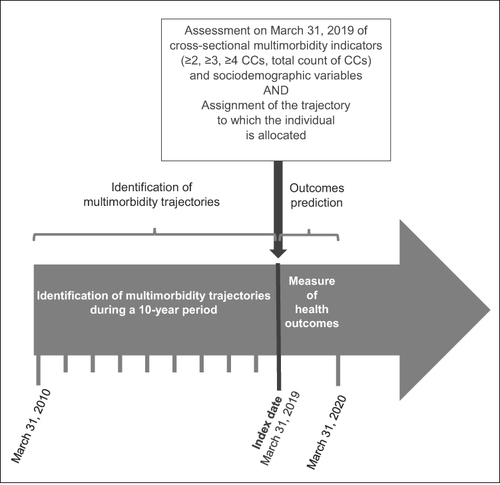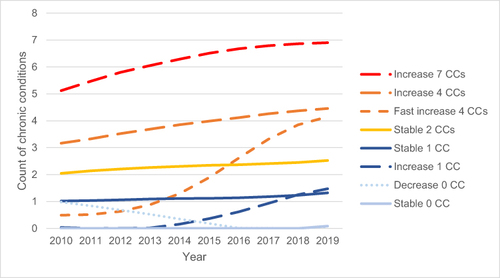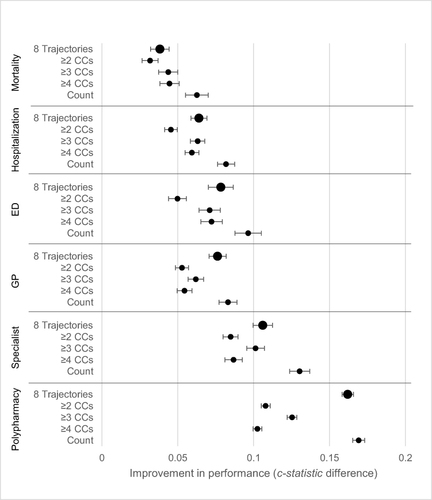Figures & data
Figure 1 Illustration of the study periods used to identify multimorbidity trajectories and to perform outcome prediction.

Table 1 Characteristic of Individuals in Each Multimorbidity Trajectory, and in the Total Study Population, Québec, Canada, n = 99,411
Table 2 Statistical Assessment of the Optimal Number of Trajectories from Latent Class Growth Analysis Models Based on Counts of Chronic Conditions Across the 10 Periods
Figure 2 Multimorbidity trajectories among individuals aged >65 years during a 10-year period, Québec, Canada, n = 99,411.

Figure 3 Improvement in performance (c-statistic) for multimorbidity trajectories and each cross-sectional multimorbidity indicator (≥2, ≥3, ≥4 CCs, total count of chronic conditions) in comparison with the baseline model (which includes age, sex, deprivation) to predict 1-year mortality, polypharmacy, hospitalization, frequent ED admissions and frequent visits to the specialist or the GP, Québec, Canada, n = 99,411.

Data Sharing Statement
The datasets generated and/or analysed during the current study are not publicly available due to data confidentiality requirements from the QICDSS. Code lists are available in supplementary data or in published papers.
